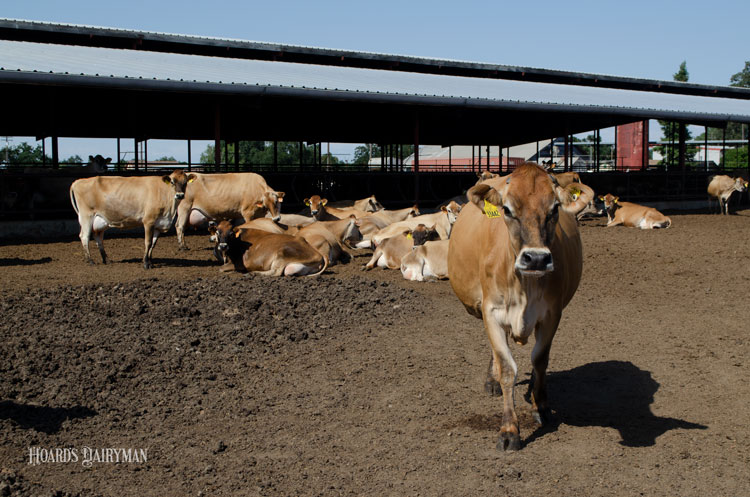
Lameness can be a fairly ambiguous term on dairy farms, but we know that it is consistently one of the most prevalent interferences with healthy dairy production. In the U.S., lameness rates as high as 45 percent have been recorded in recent years. High occurrences of lameness also in places like Denmark, Brazil, and Canada indicate that this is a worldwide affliction.
To begin a discussion on lameness, we should first understand how to identify lame cows. This is most consistently done by using a five-point locomotion scoring system. The most widely used scale, adapted below, was developed for evaluation on-farm, even from a distance:
Score of 1 (normal): Cow walks normally, with back flat walking and standing. No signs of uneven gait, uneven weight bearing, or head bob when walking.
Score of 2 (uneven gait): The cow walks almost normally. The back is often flat when standing but may arch when walking. There may be a slight uneven gait or short strides, but there is no evident head bob when walking or signs of lameness.
Score of 3 (mild lameness): The cow has an abnormal gait with short strides on at least one leg, but an observer will usually not be able to tell which leg is affected. The back is often arched when both standing and walking. No head bob is evident when walking.
Score of 4 (lameness): The cow is clearly lame on at least one leg, and an observer will usually be able to tell which one is affected. The back will most likely be arched when standing and walking, and a head bob is evident when walking.
Score of 5 (severe lameness): The cow is obviously lame on at least one leg and unable, unwilling, or very reluctant to put weight on the leg. The back will probably be arched when standing and walking, and a head bob is evident when walking.
The best recovery pen
Lameness affects both the production and welfare of our animals, so once it is identified, an effective treatment plan is vital. A study recently published in the Journal of Dairy Science compared two housing methods in evaluating their effectiveness for cows to recover from a locomotion score of 3 or 4. After a hoof trimming and the baseline scoring, cows were randomly assigned to either a straw-bedded hospital pen or the standard housing for the herd on solid concrete or slatted floors. They were then scored again each week.
Now, many dairy farmers will put severely lame cows into a hospital pen if the facilities are available. The study also confirmed that cows less severely lame greatly benefited from the softer surface, smaller group size, and shorter milking wait time that come with a hospital pen stay. Consider the results after three weeks among cows initially scored a 4 (lame): Almost half (46 percent) of cows in the hospital pen had improved to a score of 3 (mildly lame). In contrast, only 16 percent of cows housed in their normal environment moved from a 4 to a 3.
The paper cited another study that found 91 percent of herds surveyed had at least one hospital pen, but we know that because of stocking densities (100 square feet per cow is recommended) and other challenges, it may not always be practical to move cows to a hospital pen at the first sign of lameness. These researchers did conclude, though, that providing treatment sooner rather than later can help cows recover to full productivity faster. Keeping locomotion scores in mind when working with the herd can be useful in making these housing decisions.








